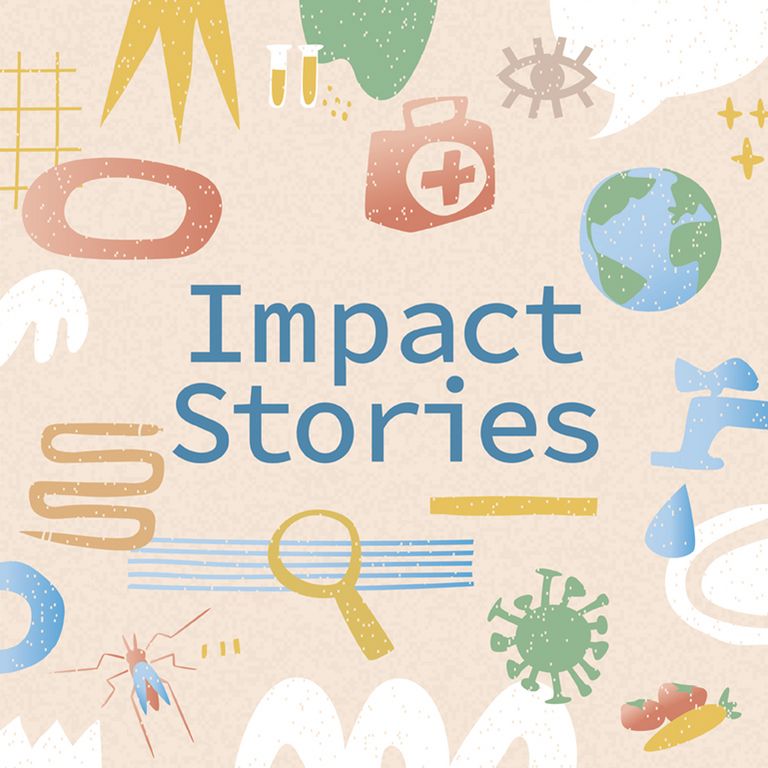

Koch’s ground-breaking discovery paved the way for improved control of TB. Indeed, the World Health Organization estimates that we could save 63 million human lives since the year 2000 thanks to various interventions. Science, too, has made great progress since Koch’s discovery, and we learned much about the biology and epidemiology of TB.
Despite the advances, TB remains one of the top infectious killers of humankind. With 10 million new cases and 1.4 million TB deaths every year, TB kills more than HIV/AIDS and malaria combined. Even though COVID-19 has claimed more lives since the beginning of the pandemic, the collateral damage on health systems around the world caused by COVID-19 is worsening the global burden of TB.
Especially multidrug-resistant TB (MDR-TB) and the associated mortality are likely to increase as a direct consequence of the pandemic. This is due to many TB patients – previously on treatment – not taking their drugs anymore. MDR-TB is already responsible for a third of all human casualties and treatment interruption in TB is well known to fuel antimicrobial resistance (AMR). AMR on the other hand is a global public health and economic crisis in itself, already referred to by some as “the next pandemic”.
"With 10 million new cases and more deaths than caused by HIV and malaria combined, tuberculosis remains one of the top infectious killers of humankind."

Why are we still fighting TB today?
The short answer is: because of a lack of political will and a lack of funding. The theme of this year's World Tuberculosis Day - "The Clock is Ticking" - reminds us that time is running out to achieve the goals of "Ending TB" that were set out by global leaders.The case of COVID-19 demonstrates what strong leadership and appropriate funding can achieve; who would have thought at the beginning of the pandemic that a year later, we would be mass vaccinating not with one, but multiple highly efficacious vaccines? By contrast, current TB control still relies on a single, suboptimal vaccine, developed more than 100 years ago, and with protective efficacy of between 0 and 80%.
Similarly, even though TB drug development is progressing after decades of neglect, multiple combined antibiotics have to be administered for many months to successfully cure TB. This often leads to severe side effects, and because resistance to some of the newer drugs is already emerging, we need better regimens. Moreover, despite an improving diagnostic portfolio, around one-third of people with TB are missed or not reported, and may therefore not get the care they need.
What are some of the open biological questions in tuberculosis?
In addition to insufficient political will and inadequate funding, TB presents formidable biological challenges. The pathogen Mycobacterium tuberculosis has evolved in humans for millennia. It is therefore extremely well adapted to the human body and manipulates the immune system in many ways.
M. tuberculosis can also enter a state of dormancy, during which its reduced metabolic activity makes drugs less active. This phenomenon is known as drug tolerance and explains why the treatment for TB takes many months, sometimes even years.
Researchers are currently trying to understand why most people exposed to M. tuberculosis control the infection while others develop an active disease. Identifying the biological determinants causing these various outcomes would facilitate the development of new vaccines.
Related questions are how a previous infection influences the outcome of an infection by an unrelated strain of M. tuberculosis, and what the consequences of mixed infections might be. Finally, there is increasing evidence that TB-infected individuals can become infectious before developing symptoms. A key question resulting from these observations is to what extent such cases of subclinical TB contribute to the transmission of M. tuberculosis.
In summary, many important questions in the TB field remain. Answering these will allow for the development of better tools to combat this disease. Enhancing public and political awareness with the World Tuberculosis Day 2021 will be key to mobilizing the resources necessary to eliminate humankind’s deadliest infectious disease. Surely, the global response to COVID-19 could serve as a blueprint.
This text was originally published on FEMSmicroBlog by Sebastien Gagneux, an Associate Professor and Head of Department of Medical Parasitology at Swiss TPH and the University of Basel. His laboratory studies the causes and consequences of strain variation in M. tuberculosis with a particular focus on the ecology and evolution of AMR.